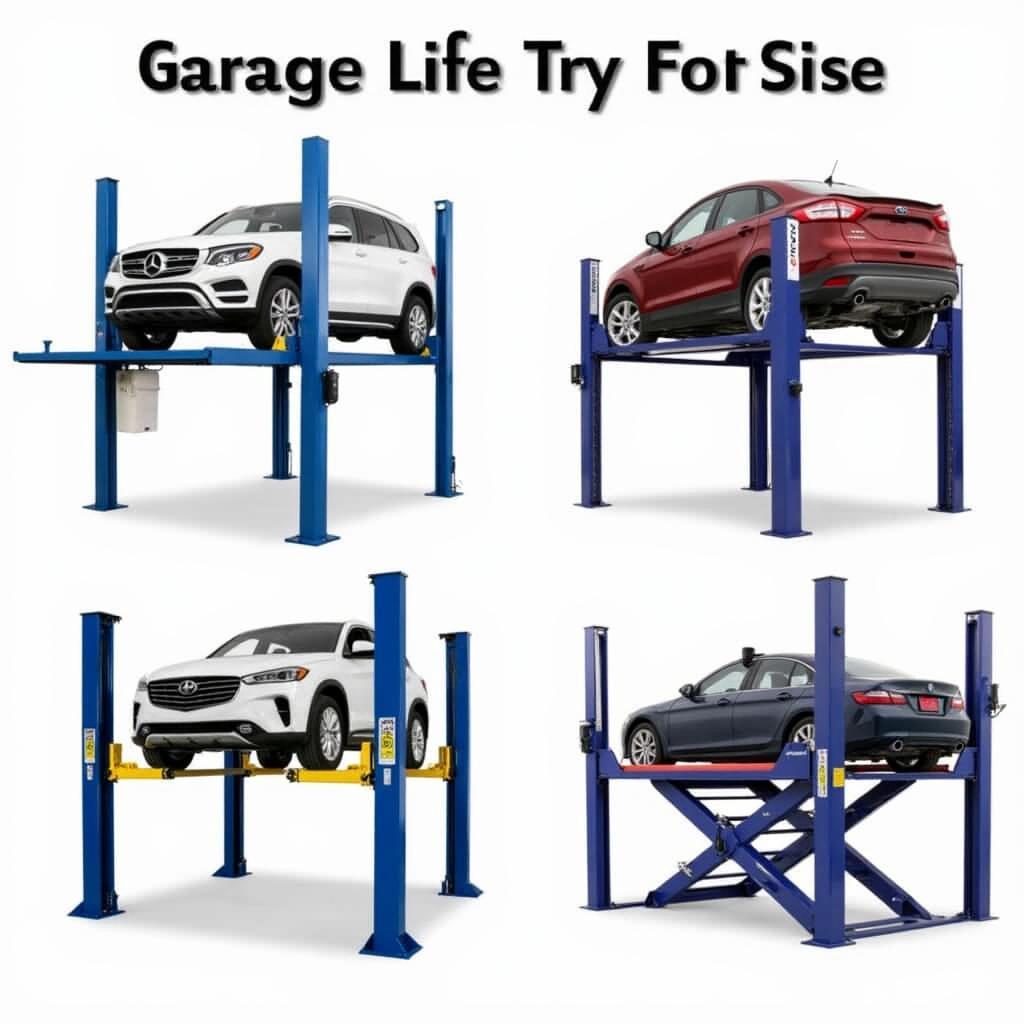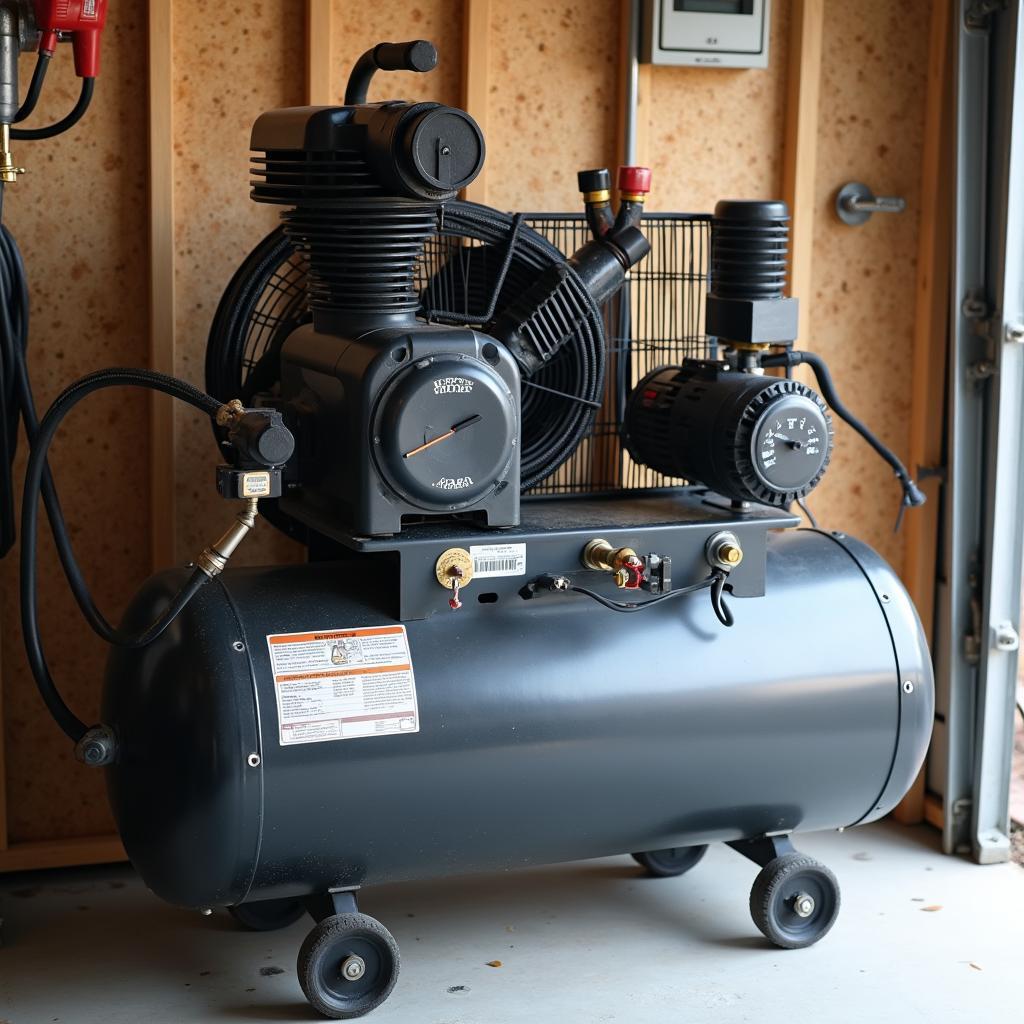The automotive service industry is constantly evolving, demanding that garages and workshops adapt to new technologies and customer expectations. At the heart of this adaptation lies the right Auto Service Garage Equipment. Choosing the right equipment can be the difference between offering top-tier service and lagging behind the competition. This comprehensive guide delves into the essential aspects of auto service equipment, helping you make informed decisions for your business’s success.
Understanding Your Garage Equipment Needs
Before diving into specific equipment types, it’s crucial to assess your garage’s unique needs. Consider the following factors:
- Services Offered: The type of auto services you provide will largely dictate the equipment you need. A general repair shop will have different requirements than a specialist in transmission repair or collision damage.
- Budget: Garage equipment comes in a wide price range. Establishing a realistic budget beforehand helps narrow down your options and prevents overspending.
- Space Constraints: The size and layout of your workspace will influence the type and size of equipment you can accommodate.
- Future Growth: Investing in equipment that can scale with your business’s projected growth is a smart move.
Essential Auto Service Garage Equipment:
While the specific equipment you need will vary, several categories are considered essential for most auto repair shops:
1. Lifts: The Backbone of Your Garage
 Car Lifts in Garage
Car Lifts in Garage
Lifts are fundamental to any auto repair shop, providing safe and efficient access to the underside of vehicles. Common types include:
- Two-Post Lifts: These are versatile and space-saving, ideal for general repairs.
- Four-Post Lifts: Offering greater stability, these are suitable for heavier vehicles and alignments.
- Scissor Lifts: Perfect for quick repairs and wheel services, these lifts offer low-profile access.
2. Diagnostic Equipment: The Brains of the Operation
 Mechanic Using Diagnostic Tools
Mechanic Using Diagnostic Tools
Modern vehicles rely heavily on sophisticated electronics. Diagnostic equipment helps pinpoint issues accurately:
- Scan Tools: These read and interpret error codes from a vehicle’s computer system, providing crucial information for diagnosis.
- Engine Analyzers: Offering in-depth analysis of engine performance, these tools help diagnose complex mechanical and electrical issues.
- Oscilloscope: For advanced diagnostics, an oscilloscope visualizes electrical signals, aiding in identifying intermittent problems.
3. Wheel Service Equipment: Keeping Your Customers Rolling
 Tire Changer and Balancer in Action
Tire Changer and Balancer in Action
From tire changes to wheel alignments, this equipment is crucial for any garage dealing with vehicle maintenance:
- Tire Changers: These make removing and mounting tires efficient and safe.
- Wheel Balancers: Essential for ensuring a smooth ride, these correct any imbalances in tire and wheel assemblies.
- Alignment Machines: Accurate wheel alignment is crucial for tire longevity and vehicle handling.
4. Air Compressors and Systems: Powering Your Tools
 Air Compressor in a Garage Setup
Air Compressor in a Garage Setup
Air compressors provide the necessary power for a wide range of pneumatic tools used in auto repair:
- Reciprocating Compressors: These are cost-effective and suitable for lighter-duty tasks.
- Rotary Screw Compressors: For continuous operation and high-demand environments, these are a reliable choice.
- Air Hoses, Reels, and Fittings: Don’t overlook the importance of a robust air distribution system for optimal tool performance.
5. Additional Essential Equipment:
Beyond the core categories, certain tools are indispensable for day-to-day operations:
- Jacks and Stands: Essential for safely lifting and supporting vehicles during repairs.
- Hand Tools: A comprehensive set of wrenches, sockets, screwdrivers, and pliers is a must-have.
- Fluid Handling Equipment: This includes oil drains, transmission fluid dispensers, and coolant flushers.
Choosing the Right Equipment: Factors to Consider:
With countless options available, selecting the right equipment can feel overwhelming. Consider these factors to make informed choices:
- Quality and Durability: Investing in well-regarded brands known for their reliability is key.
- Features and Functionality: Analyze the specific features of each equipment piece and how they align with your service needs.
- Ease of Use: User-friendly equipment increases technician efficiency and reduces errors.
- Safety Features: Prioritize equipment with built-in safety mechanisms to protect your technicians and your shop.
- After-Sales Support: Choose manufacturers and suppliers offering reliable technical support, warranties, and parts availability.
Investing in the Future of Auto Service
The automotive landscape is changing rapidly. Electric vehicles (EVs), advanced driver-assistance systems (ADAS), and increasingly complex vehicle electronics require specialized equipment. Staying ahead of the curve ensures your garage remains competitive.
Consider these future-proof investments:
- EV Charging Stations: As EVs gain popularity, offering charging facilities attracts new customers and provides an additional revenue stream.
- ADAS Calibration Equipment: With the rise of ADAS features like lane assist and adaptive cruise control, calibration services are becoming essential.
- Specialty Tools for EVs and Hybrids: Investing in insulated tools and equipment designed for high-voltage systems is crucial for servicing EVs and hybrids safely.
Conclusion: Equip Your Garage for Success
Selecting the right auto service garage equipment is a strategic decision that directly impacts your business’s efficiency, service quality, and ultimately, profitability. By carefully assessing your needs, considering the factors outlined in this guide, and embracing future trends, you can equip your garage for success in the ever-evolving automotive industry. Remember, investing in quality equipment is an investment in your business’s future.
FAQs
Q: What is the most important piece of equipment for a new auto service garage?
A: While it depends on your specific services, a high-quality two-post lift is often considered the backbone of most garages, providing versatility for a wide range of repairs.
Q: How often should I service my garage equipment?
A: Regular maintenance is crucial for equipment longevity. Consult the manufacturer’s recommendations, but generally, annual servicing is a good practice.
Q: What safety features should I look for in garage equipment?
A: Essential safety features include overload protection, emergency stop buttons, safety locks on lifts, and proper ventilation for exhaust systems.
Q: Do I need specialized equipment for servicing electric vehicles?
A: Yes, working on EVs requires specialized insulated tools, high-voltage gloves, and training due to the presence of high-voltage components.
Q: What is the best way to dispose of old garage equipment?
A: Contact your local recycling center or scrap metal dealer for environmentally responsible disposal options.
Need help finding the right auto service solutions in Tucson? Consider these services:
Explore more localized service options:
Let us help you equip your garage for success! Contact our team at WhatsApp: +1(641)206-8880, Email: [email protected]. We offer 24/7 customer support.

Leave a Reply